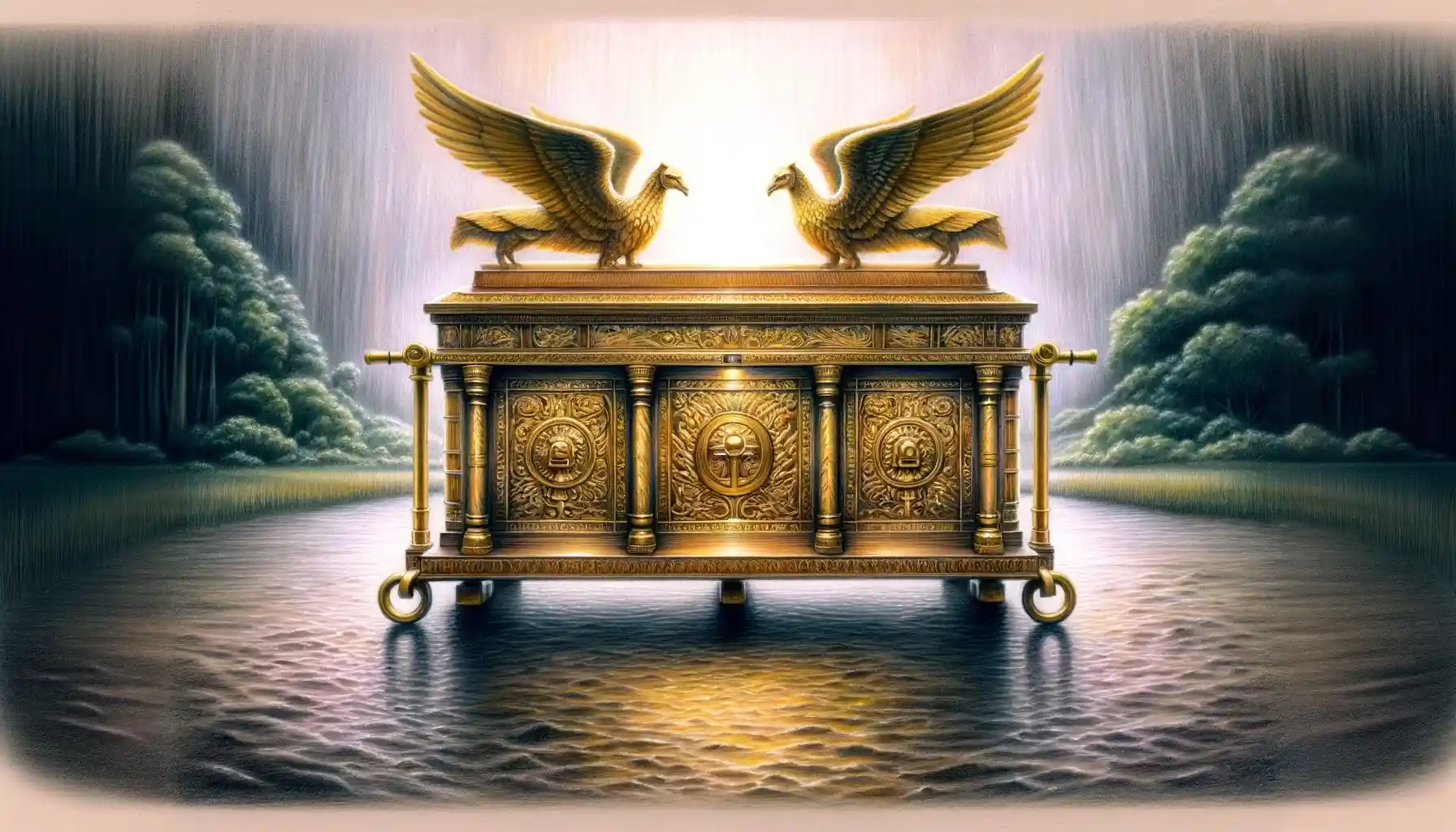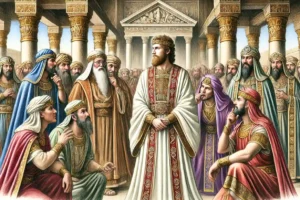
Ark of the Covenant Specifications
The Ark of the Covenant, a sacred chest built by the Israelites under the direction of God, is central to many biblical narratives. It was constructed according to precise specifications given to Moses on Mount Sinai.
Quick Facts:
- Dimensions: The Ark measured approximately 2.5 cubits in length, 1.5 cubits in width, and 1.5 cubits in height (about 45 inches long, 27 inches wide, and 27 inches high).
- Materials: It was made of acacia wood and overlaid with pure gold inside and out.
- Lid (Mercy Seat): The cover of the Ark, known as the Mercy Seat, was made of pure gold and featured two cherubim with outstretched wings.
- Poles: The Ark had gold rings on its four feet, through which poles overlaid with gold were inserted for carrying.
- Contents: It contained the stone tablets of the Ten Commandments, Aaron’s rod that budded, and a golden pot of manna.
- Symbolism: The Ark represented God’s presence and covenant with the Israelites.
- Location: Initially housed in the Tabernacle, it was later placed in the Temple built by Solomon in Jerusalem.
The Ark of the Covenant, described in the Bible as a sacred chest, is one of the most significant religious artifacts in Judeo-Christian tradition. Its specifications, construction, and symbolism are detailed in several books of the Old Testament, particularly in Exodus, Numbers, Joshua, and 1 Kings.
1. Construction and Dimensions: The Ark’s construction is meticulously outlined in Exodus 25:10-22. It was to be made of acacia wood, a durable and resistant material, measuring 2.5 cubits in length, 1.5 cubits in width, and 1.5 cubits in height. Converting these measurements, the Ark was approximately 45 inches long, 27 inches wide, and 27 inches high. This compact yet significant size reflects both the accessibility and the sanctity of the artifact.
2. Materials and Design: The Ark was overlaid with pure gold inside and out (Exodus 25:11), signifying its holiness and divine purpose. The use of gold, a precious and incorruptible metal, symbolizes purity, wealth, and the divine presence of God. The Ark’s lid, known as the Mercy Seat, was also made of pure gold and featured two cherubim with outstretched wings, facing each other and covering the Mercy Seat with their wings (Exodus 25:17-20). These cherubim are symbolic of God’s throne and His presence among His people.
3. Poles and Rings: To ensure the Ark could be transported without being touched directly, it was equipped with gold rings at each corner. Poles made of acacia wood and overlaid with gold were inserted through these rings (Exodus 25:13-15). This design emphasized the Ark’s sacredness, as direct contact with it was forbidden, a regulation that was strictly enforced, as seen in the incident involving Uzzah (2 Samuel 6:6-7).
4. Contents of the Ark: The Ark’s contents were deeply symbolic:
- The Stone Tablets of the Ten Commandments: These represented God’s covenant and the foundation of His laws given to the Israelites (Exodus 25:16).
- Aaron’s Rod that Budded: This miraculous rod, which sprouted buds, blossoms, and almonds, signified God’s chosen priesthood and His power to bring life from death (Numbers 17:10).
- A Golden Pot of Manna: This contained some of the manna that God provided for the Israelites during their 40 years in the wilderness, symbolizing His provision and sustenance (Hebrews 9:4).
5. Symbolism and Theological Significance: The Ark symbolized God’s throne on earth, His presence, and His covenant with Israel. It was central to the Israelites’ worship and was placed in the Holy of Holies within the Tabernacle and later in Solomon’s Temple. The Ark’s presence was associated with miraculous events, such as the parting of the Jordan River (Joshua 3:14-17) and the fall of Jericho (Joshua 6).
The Ark also represented God’s judgment and mercy. The Mercy Seat was where the high priest would sprinkle the blood of a sacrifice on the Day of Atonement, symbolizing atonement for the sins of the people (Leviticus 16:14-15). Thus, it embodied both God’s holiness and His grace.
6. Historical and Eschatological Significance: The Ark’s history includes its capture by the Philistines (1 Samuel 4:11), its return to Israel (1 Samuel 6:13-15), and its final placement in Solomon’s Temple (1 Kings 8:1-11). Its disappearance after the Babylonian conquest in 586 BCE remains a mystery, fueling various theories and legends.
Eschatologically, the Ark is believed to hold a future role in the Messianic era, symbolizing the ultimate reconciliation between God and His people. Jeremiah 3:16-17 hints at a time when the Ark will no longer be needed because God’s presence will be universally acknowledged.
In conclusion, the Ark of the Covenant is a profound symbol of God’s presence, holiness, and covenant with Israel. Its detailed specifications and the reverence with which it was treated underscore its significance in the biblical narrative and its lasting theological impact.



